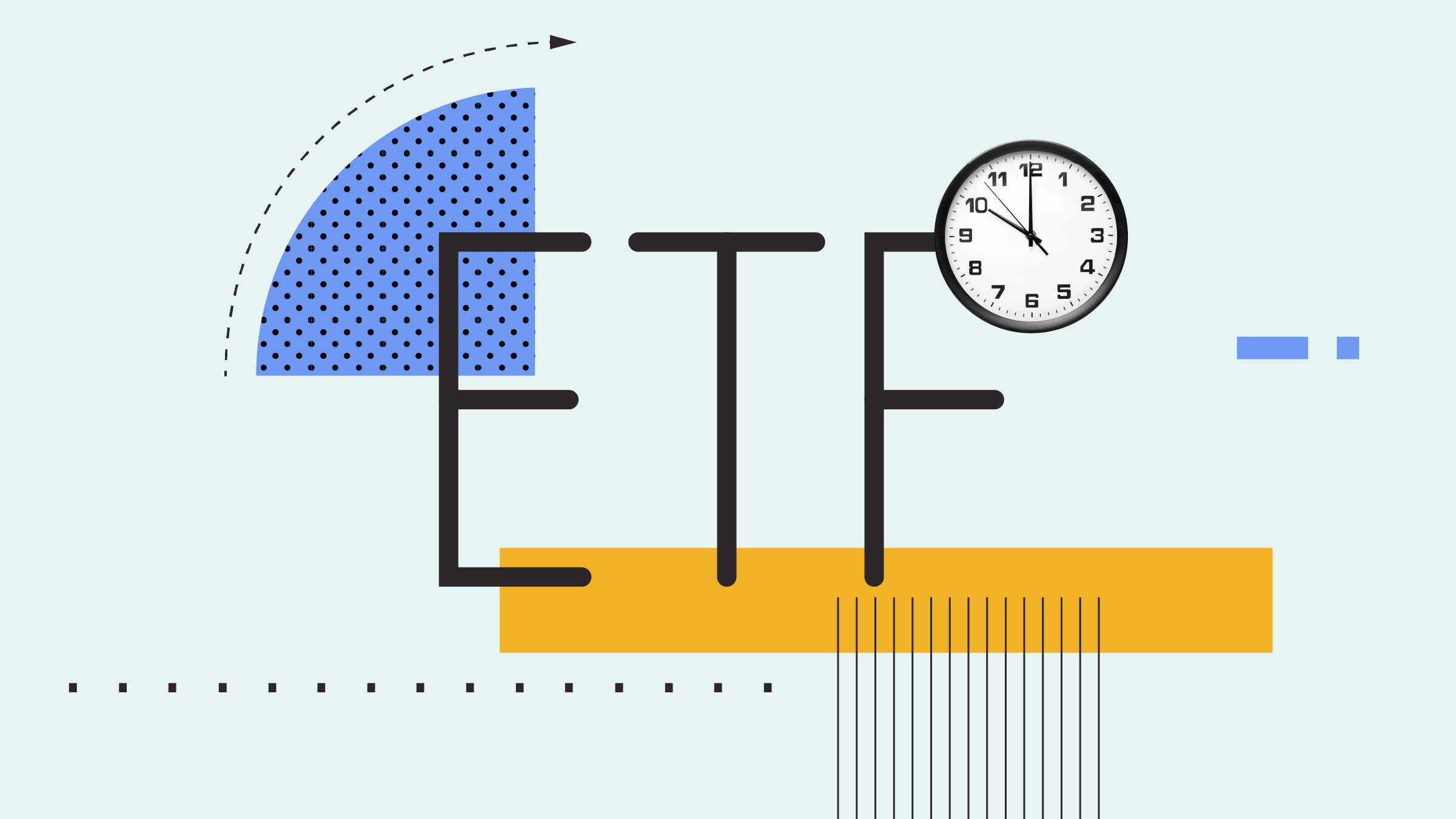Jeremy Glaser: For Morningstar, I'm Jeremy Glaser. As interest in dividends continues to rise, many investors wonder if that style of investing is right for them and how to build a portfolio of dividend-paying stocks. I'm joined today by Josh Peters--he is the editor of Morningstar DividendInvestor newsletter and also our director of equity income strategy--for some advice.
Josh, thanks for joining me.
Josh Peters: Good to be here, Jeremy.
Glaser: Let's start with whom dividend-investing is right for--what kinds of goals you should have in mind before you start dividend-investing. Who do you think should look at a strategy like this?
Peters: I think it's for anybody who eventually is going to need a stream of income for retirement, which is to say almost all of us. Maybe there are some people who have still got defined-benefit pension plans and that's going to take care of their retirement; but for most of us, we've been handed this really tough task that frankly they don't teach in school very much--certainly not to everybody--which is how do you put away enough money for retirement and then convert those savings into a flow of income? Dividends may not be the entire solution for either saving up for retirement or providing that stream of income while you're in retirement, but they are very well positioned to be a very large part of the solution for most people. And the opportunity to combine both the total-return aspect--the capital appreciation and inflation-hedge aspect that you get from the stock market--with the predictable income component that you can get elsewhere only from fixed income. And to do that simultaneously--have that portion of your portfolio hitting to both sides of the field--that's pretty valuable.
Glaser: But dividend-payers are a small slice of the market. How do you know that that's really where you should be focus on getting your retirement funds versus looking at maybe areas that are growing a little bit faster or companies that are kind of in a more nascent part of their growth cycle?
Peters: Sometimes, it really pays to take the dividend itself out of the equation and just look at the business in an income-agnostic way--which is to say, assuming that I am going to be a partner in this business for the long term, can I understand it? Does it engage in a business activity that I'm comfortable with--that I can see and have some confidence predicting over a very long period of time? Is the balance sheet strong? Or is this just kind of a fly-by-night business that's going to fall apart when the economy does or when the stock market goes down? Is management allocating capital effectively? That's where the dividend starts to come back into the conversation. Is it providing at least some growth? Because there are very, very few stocks out there that you could justify owning just on the basis of the dividend itself. You really need that growth. You need quality. You need economically defensive attributes, I think, for a large portion of your portfolio.
Now, some investors are much more entrepreneurially minded, and they want to find the next ![]() Facebook (FB) or the next
Facebook (FB) or the next ![]() Google (GOOGL). That's fine. It's fine for some people to do that with just a portion of their portfolio. But when you look at the kinds of businesses--well established, well financed, well managed, providing a direct shareholder return. And then you layer on the practical advantage of collecting that dividend and either reinvesting it or using it to fund withdrawals. All of a sudden, it turns out these are the kinds of companies you'd probably want to invest in any way because of their risk characteristics, because of their understandability. I, for one, like to think of
Google (GOOGL). That's fine. It's fine for some people to do that with just a portion of their portfolio. But when you look at the kinds of businesses--well established, well financed, well managed, providing a direct shareholder return. And then you layer on the practical advantage of collecting that dividend and either reinvesting it or using it to fund withdrawals. All of a sudden, it turns out these are the kinds of companies you'd probably want to invest in any way because of their risk characteristics, because of their understandability. I, for one, like to think of ![]() Apple (AAPL). Apple pays a dividend now. They just raised it again. But an Apple with a dividend is not the same as a
Apple (AAPL). Apple pays a dividend now. They just raised it again. But an Apple with a dividend is not the same as a ![]() General Mills (GIS) with a dividend. I don't have any real confidence in an outlook I might prepare for what their market share is going to be in something like smartphones and the margins associated with that even in five years.
General Mills (GIS) with a dividend. I don't have any real confidence in an outlook I might prepare for what their market share is going to be in something like smartphones and the margins associated with that even in five years.
General Mills: I'm pretty sure they're still in the Cheerios business in 50 years. So, when you start thinking about those long-term relationships you need to have with a company you are going to invest in in order to drive your portfolio's results over a long period of time, all of sudden those more-predictable defensive businesses, even if they don't have the big growth component alone, they've got the total return and the risk characteristics that I think you want at the heart of your portfolio.
Glaser: We are looking over these long time periods. What kind of return expectations do investors need to have before pursuing a strategy like this?
Peters: Well, I think you start with what could you get from the market overall. And just a generic type of long-term total-return assumption that you might make, I would say, for U.S. stocks is 9%. And that is composed of about a 2% dividend yield and then 7 percentage points of long-term dividend growth to drive capital appreciation as well as the rising stream of income over time. And then of that, maybe 2% to 2.5% of it is inflation and the rest of that is real growth in the dividends themselves. And a lot of that might just be funded with share repurchases. So, you're not relying on a tremendous amount of, say, economic growth in general in order to make that math work. But part of the problem is that, historically, dividends have not grown at 7% a year over any long period of time.
If you look back over the last 50 or 60 years, the post-World War II type of environment, the number might be 6%, and that was in a period with higher inflation than we have now--say, 4% average inflation as opposed to today where we're struggling to get to 2%. So, as just an index investor thinking agnostically about what kinds of results you get by just having a generic allocation to U.S. equities, 9% might be too much--especially now, after six years of a bull market where prices have come up a lot. Then, I start thinking maybe it's 9%, maybe it's 8%, maybe it's 7%, even as a long-term investor. Could I live if it was 6%? But then, what can you do within your selection of investment strategy and the kinds of companies you own? What can you do to maybe build that number back up? I think one of the best things you can do is to look for those higher-yielding companies. Not the 10%, 12% 15% or 20% yielders--those are either extremely risky companies or dividends that are about to be cut or both--but 3% to 5% is what I look at as the sweet spot. The portfolio I manage for Morningstar yields a little bit under 4% right now; that's actually a historically normal yield for the U.S. market.
So, if I have a portfolio that has a pretty normal yield in that long-term context, and I still think I can get mid-single-digit long-term dividend growth out of it, I feel like I can have a much more confident outlook, projecting maybe 9% or maybe even a little bit better than that for a long-term total return, because so much of it is already accounted for in that much more predictable form of income return upfront. So, that's something even for people who are more focused on growth and wealth accumulation to consider--especially in that tax-deferred setting where you can reinvest your dividends. And you--not the company, but you--have the opportunity to determine what happens to that portion of the company's earnings. Having a more predictable baseline to start formulating your portfolio-return assumptions around is a big advantage. And if those companies are also low risk, which is certainly a big component of our portfolio strategy as well, all the better. Low beta not only ought to correlate to better risk-adjusted outcomes, but it's easier to own when the going gets tough and investors tend to make those forced errors that really hurt in the long term.
Glaser: If you are new to investing or maybe are sitting on cash after you sold during the crisis or sold during some other time, what's the right way to restart or to start investing in dividend stocks? When you're looking at valuations that are pretty much either fully valued or overvalued right now--not a lot of great opportunities--how do you start building that portfolio?
Peters: That is a tough one. I'm not going to dodge it, but I'm going to start out by saying that that is perhaps the toughest question today, because we have come up so far from where we were not just at the bottom in 2009, but even where we were in terms of valuations in 2011 and 2012. The market has gone up an awful lot in the last couple of years, and it's been multiple expansions. Stocks getting more expensive, dividend yields going down or holding steady even though dividends have grown a lot--or P/E multiples going up--much more so than underlying growth of earnings. So, you get to pay more, but you don't necessarily get more for it.
That said, one of the advantages, I think, that you have with higher-yielding stocks--and this is a big one--is that that dividend tends to act like an anchor. It helps--it doesn't guarantee, but it helps--hold the stock price to some reasonable level of intrinsic value. It might be a little overvalued or little undervalued, but it's very rare for staples companies or utilities or pipeline partnerships to become wildly mispriced, because the cash flows are too steady, too bondlike to act like a social-networking stock that's blowing up today--pick a name that might be out of favour today, ![]() Twitter (TWTR) or whoever.
Twitter (TWTR) or whoever.
So, at this point, I'm still willing to say that the right time to embrace a dividend strategy is when you realize that the objectives of the strategy are best for you--that they align with your long-term financial goals. And if you want to focus on picking off only the cheapest stocks that might meet that strategy, that's one option; but then you have to be very careful to make sure that you're adequately diversified. You might also want to consider averaging in and buying shares over a period of months--maybe a year--to average in, but that's not necessarily going to guarantee you better prices on the way in. Honestly, that might just be psychologically easier to deal with.
Perhaps the easiest strategy is to say, "The strategy is right for me; I'm satisfied with the yield of the portfolio I'd like to put in place today. I'm confident in its growth prospects, and if the market happens to drop later, I'll have the opportunity to reinvest dividends perhaps at a lower price." But just make the plunge. There's no easy answer to the question; you have to find the solution that's best for you. But just taking the plunge, reflecting a decision that's made more about you and what you're comfortable with, what your strategic goals are, and worrying less about what is likely to be in or out of favour on Wall Street in the next six or nine months. That might actually be the best way to go.
Glaser: Josh, thanks for joining me today.
Peters: Thank you, too, Jeremy.
Glaser: For Morningstar, I'm Jeremy Glaser. Thanks for watching.
This video originally aired on morningstar.com on May 15, 2015.





















